The U.K. population is undoubtedly a much-surveyed one; the country presents a tightly controlled and regulated security industry. Its surveillance market is the biggest in the world; its electronic security market is the most mature in Europe. A&S sat down with vendors, market researchers, analysts, educators, standards inspectors, trade association leaders, government organizations, consortium members and one academic to find out about the state of play.
The U.K. population is undoubtedly a much-surveyed one; the country presents a tightly controlled and regulated security industry. Its surveillance market is the biggest in the world; its electronic security market is the most mature in Europe. A&S sat down with vendors, market researchers, analysts, educators, standards inspectors, trade association leaders, government organizations, consortium members and one academic to find out about the state of play.

The overall U.K. economy has a healthy short-term outlook with buoyant growth rates, low unemployment and low interest rates, allied to a steady inflation level, AMA Research has found. In the medium term, the economy is expected to continue to grow until 2008. Prospects are dependent on sustained business and consumer confidence in the U.K., and on the impact of rising oil prices.
As the profile of the U.K. population changes, it will have implications for suppliers of all products. During the next decade, there will be a smaller proportion of younger, more price-orientated buyers in the market. This will be coupled with a greater proportion of more affluent buyers in the older age groups. These developments should benefit suppliers of building and home improvement products in all price segments of the market.
While growth in the U.K. security market was a healthy 6 percent in 2006well above inflationmore than two-thirds of companies monitored by Plimsoll Portfolio Analysis saw a fall in sales. This indicates that much growth is being shared by a select band of firms, said the research company. In 2007, this trend is set to continue, said Senior Analyst David Pattison, in a prepared statement. While overall margins in 2006 were 4 percent, with some companies enjoying a record 20 percent or more, "I believe that these margins will be squeezed in 2007, and at least a third of companies in the sector will lose money," said Pattison.
IMS Research's figure puts the U.K. electronic security market in 2006 at US$1.06 billion; the Proplan Division of i & i Limited show the U.K. as being worth $2.3 billion at installed prices in 2006. Of this, access control accounted for 27 percent, CCTV video surveillance 41 percent, and intruder alarms 32 percent.
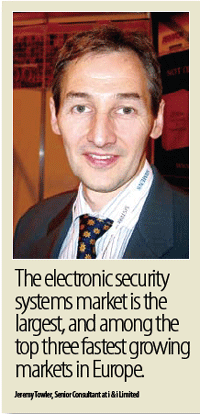
"Installed system prices or installed prices refer to the final price paid by the end customer for a fully working system," explained Jeremy Towler, Senior Consultant at i & i Limited. "It includes the cost of the product and all added value such as engineering, installation, wiring, commissioning and profit margins. The electronic security systems market is by far the largest, and among the top three fastest growing markets in Europe." IMS Research's figure was broken down into 34 percent for fire detection and suppression systems and 36 percent for CCTV and video surveillance, while access control and intruder alarm systems accounted for 15 percent each. Although i & i forecast that the decline in the intruder market will continue, it will be less pronounced; while increased growth in access control and CCTV surveillance will more than compensate.
Trends
AMA Research said that in the long term,
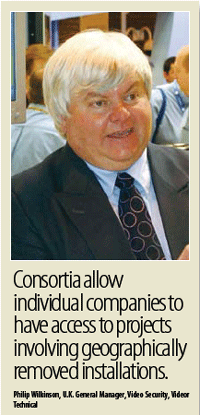
overall market growth may be supported by the trend toward integrated systems, which are gaining share prompted by growth of IT infrastructure in many organizations. However, in the short to medium term, intense price competition is likely to continue in the CCTV and access control sectors, in line with the increasing level of lower-value imports from the Far East. The high level of price competition in the market is prompting manufacturers to focus on value-added services such as maintenance and service contracts, in order to boost margins and long-term revenue. Product development is fairly rapid; new hardware and software are rapidly falling in price due to the fast pace of development. Growth of integrated systems may cause a blurring of boundaries in the overall market, as products such as CCTVs, access control, fire safety and intruder alarms are combined into single systems. Growth of larger organizations that offer the entire spectrum of electronic security and fire products is increasing, which is also likely to support this trend.
Quality of components throughout a systemcameras, recordersneed to be well integrated and of a sufficient standard to achieve the objective, which increasingly has to do with transmission of the image, said James Walker, Managing Director of Dallmeier. Remote and centralized monitoring are becoming more and more prevalent, with quality of image and transmission time imperative. Ability of a security staff member, or the owner of a small vehicle, to receive alarms on PDAs or cellphones is important, too.
"Depending on whom you talk to within the U.K. security industry," said Robert Chandler, U.K. Sales Manager at Aasset Security, "they all have different needs: suitability, fitness for purpose, proven technology and interoperability. Features, benefits and backup should always be among the first criteria. Compromises should be second in the consideration process and, last, cost. Sadly and all too frequently, price without consideration of all the other aspects is too often perceived as being the answer, with the usual consequences for the end-user."
Hot security topics include vein pattern recognition, intelligent video, and Web-based systems such as access control, said Ken MacDonald, U.K. Regional Sales Manager for Visual Defence. Remote monitoring, both in terms of specialist companies providing this service and large organizations utilizing their own WAN/ LAN to monitor their own facilities, is another sector garnering much attention, he said, while the BSIA's new guide to integrated security systems points to increasing adoption of network equipment, including wireless; greater central control of security systems; changes in access control formats; and greater use of biometric technologies.
The major trends that are happening in the market are also happening everywhere else, said Paul Everett, Senior Research Analyst at IMS Research. These include video content analysis software; all-in-one, smart-card technologies; wireless technology; convergence of logical and physical access; and entrance of IT players into the security space. Integration of different systems is also a strong trend. However, different ideas of what integration entails can be seen in the industry. Some see it as hardware integration; others think that software integration is just as important.
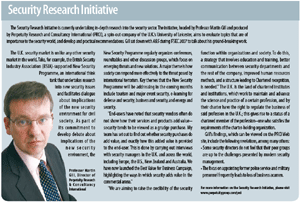
Players and Channels
The major distributors are Norbain and ADI Gardiner, said Gordon Thomas, Baxall spokesperson, while systems integrators include Tyco and Initial. Colin Kramer, Marketing Director, EMEA, ADI-Gardiner, pointed to Cooper Security, Honeywell, Texecom, CQR and Yuasa as major intruder alarm manufacturers; Dedicated Micros, Honeywell Video, Bosch, Vantage and Vista as major CCTV manufacturers; Paxton, ACT, Bell, CDV and PAC as major access control manufacturers; and Appollo, Computonics, Ventcroft and Morley as major fire equipment manufacturers.
Distributors worth reckoning with include ADI-Gardiner, Norbain, Pro-Vision, Enterprise, Videcon and COP; while systems integrators of note are ADT, Chubb, Initial, Secom and Kings Security. Philip Wilkinson, U.K. General Manager, Video Security, Videor Technical, named ADT, Chubb, Bell Intruder, Siemens and Group 4 Securicor as the biggest systems integrators in the market. Apart from Norbain and ADI-Gardiner, distributors worth noting are Enterprise Security; Alarm Supplies, Security Supplieswith presence in England and Scotlandand Greenhills in Northern Ireland.
Dave Ward, Product Manager of Cooper Security, listed Initial, Romec Electronic Security and Fire, and King Security Services as notable systems integrators. Romec was initially set up by the U.K. Royal Mail service to handle security within post offices, and eventually expanded into other security services. King specializes in large retail chains such as McDonald's. Major distributors include ADI-Gardiner and other, smaller players such as Enterprise Security and South African company Elvey. There are no dedicated alarm system distributors, he added, but the biggest alarm companies in the U.K. are Texecom, Cooper Security and Visonic. To Ward's intruder alarm list, Adam Stroud, Sales & Marketing Director for Paxton Access, added PAC, Bewator, TDSi and Irish company ACT, a company which is "very competent and is growing its sales nicely." Finally, Walker stated that Norbain is the biggest U.K. distributor, adding that there are a number of smaller distributors who are "a long way behind Norbain." Systems integrators tend to specialize in different areas, he continued. These include OCS Resolution Security, Delaware Security Services, Reliance Hi-Tech, and Quadrant CCTV. The latter two are very active in the city council and town center segment, whereas OCS is more active in commercial applications and Reliance is very important in the financial segment. Link Integrated is another local systems integrator, concentrating mainly on casinos.
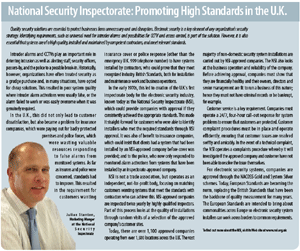
In the U.K. market, the third-party channel accounts for more than 90 percent of business, explained Towler. There are hundreds of companies that are listed as installers of security systems, but the majority are quite small. However, there are a significant number of large companies having more than 50 employees such as ADT, Chubb and Initial, but even together these only account for about one-fifth of business.
The market has witnessed major acquisitions in recent years, not least the move by Honeywell to buy into the distribution channel through its purchase of leading distributors ADI and Gardiner. While this obviously provides a powerful vehicle to increase penetration of Honeywell products in the marketplace, if this trend continues, it risks compromising customer choice in the long term.
An important trend is that of IT network installer companies such as Redstone, March, Controlware and CNL becoming active in providing total integrated building solutions. Together with other Cisco and IBM partners, they are starting to take an increasing share of the market; this must surely be of concern to traditional systems suppliers.
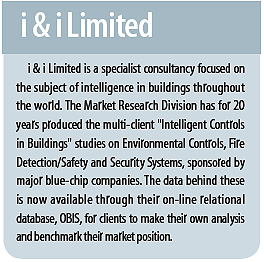
Despite the fact that some of the largest-ever acquisitions have taken place, it is still a very fragmented business, particularly in the areas of video surveillance and access control, where the largest supplier to the U.K. market has a share of no more than 12 percent. Distribution of market share has changed little in the past five years.
"On top of system integrators," said Wilkinson, "there are
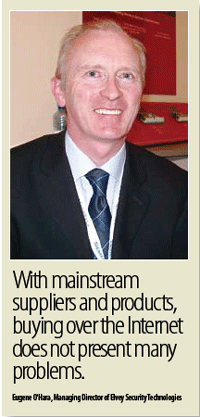
integration-buying groups or consortia consisting of a group of independent companies spread over the U.K., who work together on projects nationally. This allows the individual companies to have access to projects which need local support, even when the installation is geographically removed. There are four or five such groups in the U.K., including Aquilla and the Plexus Group. These have been put together to compete with the aforementioned systems integrators. They can do the same job, with the added bonus of local knowledge."
One prospective area of development in the longer term, confirmed AMA Research, regards use of supply agreements with facility management companies and formation of consortia for large projects. Growth of such consortia is likely to lead to an increasing number of opportunities for companies with specialist skills.
A large number of conglomerates are present at the manufacturer level, although the market remains fragmented particularly in the installation and
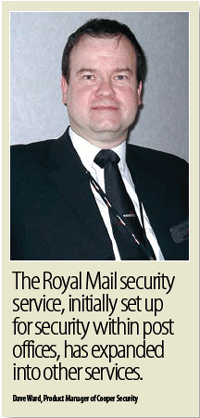
distribution sector, said AMA Research. This is also more apparent in certain sectors such as access control, although increasing level of consolidation and focus on offering fully integrated systems may result in further acquisitions, with smaller brands absorbed into larger conglomerates.
Specialist distributors are likely to remain the main force in the distribution market, as they are able to offer a range of skills such as specialist advice and services. Within the domestic market, there may be an increase in level of retailers offering basic home security kits, with increasing influence from High Street outlets and catalog stores; while traditional sources such as the DIY multiples will continue to be popular.
U.K. vendors in the intruder alarm, access control and CCTV sectors are "of altogether different models," said Eugene O'Hara, Managing Director of Elvey Security Technologies. "The intruder industry, which is the oldest, has grown up having many branches throughout the country, which is the business model of companies such as ADI-Gardiner, Enterprise Security and Elvey. The CCTV world, on the other hand, has been dominated by Norbain for a long time. These present different logistics modelsend-users can have CCTV systems delivered overnight; but the intruder market is much more about electrical wholesalers. However, this is changing: more and more people are buying over the Internet. If you have mainstream products sold by mainstream suppliers, buying this way does not present many problems."
The U.K. market is very price-sensitive and competitive, concluded Mike Parry, International Sales Manager for Remsdaq. "From a systems integrator point of view, availability of products from around the world is a key factor influencing prices. Even though there are many good U.K.-manufactured products, the industry is being driven toward products that in the first instance comply with clients' specifications but at the lowest price. Therefore, we are seeing products being used from the Far East and the U.S., where the purchasing power of the Pound helps U.K. integrators be far more competitive."